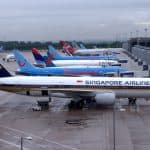
AiQ Consulting has been working with regional airports for many years, using our knowledge and experience to solve capacity issues and passenger flow problems, as well as recommending baggage handling processes and new technologies to improve efficiency.
In this two part blog, we will explore the different types of airline operating models and the challenges they present for regional airports.
The growth demand of the various airline operating models is a key topic for regional airport clients who are smaller in size than hub airports and perhaps more used to handling certain types of airlines. However, regional airports can effectively manage all airline operating models effectively. They are an opportunity for growth.
As Laurie Berryman, Vice President, Emirates UK said in a recent piece in ASB Law “Airports today are exceedingly busy and, without any new capacity, this is likely to be the case for the next year or so. So we need to be smarter in getting people through airports but we must also be better at using the under-utilised airports. Regional airports need to be used more.”
What are Airline Operating Models?
There are many different airline models used worldwide.
Legacy airlines (also known as Full Service Network Carriers) are most often former national airlines which have been privatized (to some extent). They have a large fleet and operate many different routes, including long haul, short haul and regional flights.
Premium airlines, such as Etihad, Emirates, Qatar, can be seen as extensions of the Legacy airlines, providing increased customer service over specific routes and airports. Many of these carriers have recently entered regional airports.
Low cost airlines have seen an incredible growth over the last twenty years. Their model sees reduced fees and revenues but increased passenger numbers make up this short fall in income. They do not offer any ‘benefits’ to their flights, such as meals and reserved seats, but sell their flights for a vastly reduced rate from Legacy airlines and other carriers.
This low cost model has seen airports forced to negotiate contracts that significantly reduce revenues whilst seeking to address this short fall by generating greater incomes via increased passenger numbers. As stated in a paper from Loughborough University, airports have sometimes found it difficult to turn increased passenger volume into additional revenue.
Ultra low cost airlines are a further expansion of low cost airlines, fuelled by their popularity, and offering even sparser customer service in return for lower fares. Regional airports are seen as ideal for these low cost carriers, offering the right conditions to prosper. This includes low airport and handling charges, less congestion both in terms of the runway and surface access capacity for growth and available slots.
Improvements in technology, including Check-in options and Baggage Handling Systems, have enabled the operators to process customers without overheads, but these systems must be put in place with airports, which can cause a challenge for regionals.
Charter airlines or Holiday Carriers have a business model of signing contracts with travel agencies for the transport of a given number of passengers to a given location throughout a year. It is the travel agency’s responsibility to fill the aircraft with passengers. Aircraft may be chartered by more than one travel agency.
There is strong growth in the Chartered market, particularly with the Jet2 airline. The low cost airlines also offers a popular charter service through its Jet2charters brand allowing companies or individuals to “hire” an aircraft to suit their specific requirements.
Regional airlines transport passengers between regional airports in a particular country or region and between larger hubs. They are very popular on minor routes with frequent travelers, and may have government subsidies to connect some areas which need to be linked with the rest of the country, continent or world. Small regional operators, such as FlyBe, also connect with premium and full service carriers to feed into larger hubs and other routes.
Look out for part 2 of this post for more insight into how regional airports can effectively respond to increasing demands.
Image Source: Wikimedia Commons 2017

